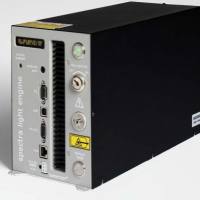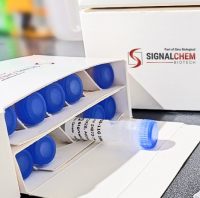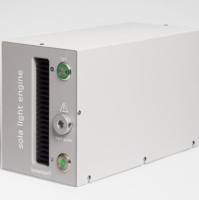LC‐MS Data Processing with MAVEN: A Metabolomic Analysis and Visualization Engine
互联网
- Abstract
- Table of Contents
- Figures
- Literature Cited
Abstract
MAVEN is an open?source software program for interactive processing of LC?MS?based metabolomics data. MAVEN enables rapid and reliable metabolite quantitation from multiple reaction monitoring data or high?resolution full?scan mass spectrometry data. It automatically detects and reports peak intensities for isotope?labeled metabolites. Menu?driven, click?based navigation allows visualization of raw and analyzed data. Here we provide a User Guide for MAVEN. Step?by?step instructions are provided for data import, peak alignment across samples, identification of metabolites that differ strongly between biological conditions, quantitation and visualization of isotope?labeling patterns, and export of tables of metabolite?specific peak intensities. Together, these instructions describe a workflow that allows efficient processing of raw LC?MS data into a form ready for biological analysis. Curr. Protoc. Bioinform. 37:14.11.1?14.11.23. © 2012 by John Wiley & Sons, Inc.
Keywords: metabolomics; liquid chromatography?mass spectrometry; pathway visualization and mapping; stable isotope labeling; metabolic flux analysis; kinetic flux profiling
Table of Contents
- Introduction
- Strategic Planning
- Basic Protocol 1: Loading LC‐MS Data into MAVEN
- Basic Protocol 2: Peak Alignment and Visualization
- Basic Protocol 3: Untargeted Analysis of Full‐Scan LC‐MS Data
- Basic Protocol 4: Targeted Metabolite Quantitation
- Basic Protocol 5: Targeted Analysis of Full‐Scan LC‐MS Data with Isotopic Labeling
- Guidelines for Understanding Results
- Commentary
- Literature Cited
- Figures
Materials
Figures
-
Figure 14.11.1 MAVEN workflow. Multiple cycles of peak detection, grouping, quality scoring, and alignment may be performed prior to biological analyses such as pathway‐based data visualization. The user can easily navigate back‐and‐forth from raw data analysis to biological analyses. Validated data tables can be readily exported to other software. View Image -
Figure 14.11.2 Chromatographic alignment of data is accomplished within MAVEN by selecting high‐intensity peaks, grouping across samples, then iteratively fitting a nonlinear retention time model. View Image -
Figure 14.11.3 Basic MAVEN interface, where loaded samples are displayed in the samples tab, and glucose 6‐phosphate and its isomers have been extracted with a 7.5‐ppm window. View Image -
Figure 14.11.4 Peak Detection box in MAVEN and associated user settings. View Image -
Figure 14.11.5 Generating a scatter plot to compare groups. (A ) Rename Set name in Samples tab to reflect sample groupings. (B ) Adjust parameters for pair‐wise comparison of grouped data. (C ) View results as scatter plot, where the size of each circle represents the fold change between the two samples sets. View Image -
Figure 14.11.6 Sample spectrum displaying isotopic pattern associated with highlighted peak of interest from Figure C. Δ m / z between 12 C and 13 C peaks is close to the expected value of 1.003355. The intensity of the 13 C peak is displayed (5.78%). View Image -
Figure 14.11.7 Known metabolite quantitation from a preloaded compound list. The remainder of the detection parameters are depicted in Figure , and described in , steps 2 to 7. View Image -
Figure 14.11.8 Rapid manual peak group acceptance or rejection (categorization as “good” or “bad”) within a list of peak groups corresponding to known metabolite m / z . The EICs displayed correspond to the highlighted row in the compound list. Clicking the green check mark or red X within the EIC window will designate the peak group as good or bad. View Image -
Figure 14.11.9 Retraining MAVEN's neural network model for peak quality scoring. Prior to re‐training, it is necessary to manually designate at least 100 peak groups as “good” or “bad.” (A ) Window as it appears before training. The neural network algorithm assigns a probability of being “good” to each peak group. False negatives (FN) are peak groups that the user designated as “good” that receive a probability <0.5; true positives (TP) are designated good peak groups and that receive a probability >0.5; true negatives (TN) are designated bad peak groups and receive a probability <0.5; and false positives (FP) are designated bad peak groups that receive a probability >0.5. (B ) Training accuracy is reflected in the FN, TP, TN, FP, and % accuracy scores. View Image -
Figure 14.11.10 Metabolic pathway map with pie charts indicating the extent of incorporation of uniformly 13 C labeled glucose into glycolytic metabolites. Unlabeled metabolites are depicted in blue, and the sums of all labeled forms are depicted in red. The sample name is listed adjacent to the slide bar. View Image -
Figure 14.11.11 MAVEN screenshot displaying isotope labeling. In this example, yeast were switched from unlabeled to uniformly 13 C‐labeled glucose. Data shown are for fructose 1,6‐bisphosphate (FBP) from yeast expressing either the normal (wt) or a decreased (DAmP) concentration of the enzyme responsible for the reversible reaction between FBP and two triose phosphates, fructose bisphosphate aldolase (encoded by fba1 ). The bar chart with the cursor on it provides information on the extent of isotope labeling. Upon mousing over the orange bar, MAVEN reveals that it reflects the 13 C3 ‐ form of FBP. This form is uniquely abundant at earlier time points in the wt strain, consistent with reverse aldolase flux joining together one labeled and one unlabeled triose. View Image
Videos
Literature Cited
| Literature Cited | |
| Antoniewicz, M.R., Kraynie, D.F., Laffend, L.A., González‐Lergier, J., Kelleher, J.K., and Stephanopoulos, G. 2007. Metabolic flux analysis in a nonstationary system: Fed‐batch fermentation of a high yielding strain of E. coli producing 1,3‐propanediol. Metab. Eng. 9:277‐292. | |
| Benton, H.P., Wong, D.M., Trauger, S.A., and Siuzdak, G. 2008. XCMS2: Processing tandem mass spectrometry data for metabolite identification and structural characterization. Anal. Chem. 80:6382‐6389. | |
| Clasquin, M.F., Melamud, E., Singer, A., Gooding, J.R., Xu, X., Dong, A., Cui, H., Campagna, S.R., Savchenko, A., Yakunin, A.F., Rabinowitz, J.D., and Caudy, A.A. 2010. Riboneogenesis in yeast. Cell 145:969‐980. | |
| Dang, L., White, D.W., Gross, S., Bennett, B.D., Bittinger, M.A., Driggers, E.M., Fantin, V.R., Jang, H.G., Jin, S., Keenan, M.C., Marks, K.M., Prins, R.M., Ward, P.S., Yen, K.E., Liau, L.M., Rabinowitz, J.D., Cantley, L.C., Thompson, C.B., Vander Heiden, M.G., and Su, S.M. 2009. Cancer‐associated IDH1 mutations produce 2‐hydroxyglutarate. Nature 462:739‐744. | |
| Deutsch, E.W., Mendoza, L., Shteynberg, D., Farrah, T., Lam, H., Tasman, N., Sun, Z., Nilsson, E., Pratt, B., Prazen, B., Eng, J.K., Martin, D.B., Nesvizhskii, A.I., and Aebersold, R. 2010. A guided tour of the Trans‐Proteomic Pipeline. Proteomics 10:1150‐1159. | |
| Haverkorn van Rijsewijk, B.R., Nanchen, A., Nallet, S., Kleijn, R.J., and Sauer, U. 2011. Large‐scale 13C‐flux analysis reveals distinct transcriptional control of respiratory and fermentative metabolism in Escherichia coli. Mol. Syst. Biol. 7:477. | |
| Huang, N., Siegel, M.M., Kruppa, G.H., and Laukien, F.H. 1999. Automation of a Fourier transform ion cyclotron resonance mass spectrometer for acquisition, analysis, and e‐mailing of high‐resolution exact‐mass electrospray ionization mass spectral data. J. Am. Soc. Mass Spectrom. 10:1166‐1173. | |
| Ishii, N., Nakahigashi, K., Baba, T., Robert, M., Soga, T., Kanai, A., Hirasawa, T., Naba, M., Hirai, K., Hoque, A., Ho, P.Y., Kakazu, Y., Sugawara, K., Igarashi, S., Harada, S., Masuda, T., Sugiyama, N., Togashi, T., Hasegawa, M., Takai, Y., Yugi, K., Arakawa, K., Iwata, N., Toya, Y., Nakayama, Y., Nishioka, T., Shimizu, K., Mori, H., and Tomita, M. 2007. Multiple high‐throughput analyses monitor the response of E. coli to perturbations. Science 316:593‐597. | |
| Keller, B.O., Sui, J., Young, A.B., and Whittal, R.M. 2008. Interferences and contaminants encountered in modern mass spectrometry. Anal. Chim. Acta 627:71‐81. | |
| Kotte, O., Zaugg, J.B., and Heinemann, M., 2010. Bacterial adaptation through distributed sensing of metabolic fluxes. Mol. Syst. Biol. 6:355. | |
| Lu, W., Bennett, B.D., and Rabinowitz, J.D., 2008. Analytical strategies for LC‐MS‐based targeted metabolomics. J. Chromatogr. B Analyt. Technol. Biomed. Life Sci. 871:236‐242. | |
| Lu, W. Clasquin, M.F., Melamud, E., Amador‐Noguez, D., Caudy, A.A., and Rabinowitz, J.D. 2010. Metabolomic analysis via reversed‐phase ion‐pairing liquid chromatography coupled to a stand alone orbitrap mass spectrometer. Anal. Chem. 82:3212‐3221. | |
| Melamud, E., Vastag, L., and Rabinowitz, J.D., 2010. Metabolomic analysis and visualization engine for LC‐MS data. Anal. Chem. 82:9818‐9826. | |
| Munger, J., Bennett, B.D., Parikh, A., Feng, X.J., McArdle, J., Rabitz, H.A., Shenk, T., and Rabinowitz, J.D. 2008. Systems‐level metabolic flux profiling identifies fatty acid synthesis as a target for antiviral therapy. Nat. Biotechnol. 26:1179‐1186. | |
| Nakahigashi, K., Toya, Y., Ishii, N., Soga, T., Hasegawa, M., Watanabe, H., Takai, Y., Honma, M., Mori, H., and Tomita, M. 2009. Systematic phenome analysis of Escherichia coli multiple‐knockout mutants reveals hidden reactions in central carbon metabolism. Mol. Syst. Biol. 5:306. | |
| Nicholson, J.K. and Lindon, J.C. 2008. Systems biology: Metabonomics. Nature 455:1054‐1056. | |
| Palsson, B. 2009. Metabolic systems biology. FEBS Lett. 583:3900‐3904. | |
| Patil, K.R. and Nielsen, J. 2005. Uncovering transcriptional regulation of metabolism by using metabolic network topology. Proc. Natl. Acad. Sci. U.S.A. 102:2685‐2689. | |
| Pluskal, T., Castillo, S., Villar‐Briones, A., and Oresic, M. 2010. MZmine 2: Modular framework for processing, visualizing, and analyzing mass spectrometry‐based molecular profile data. BMC Bioinformatics 11:395. | |
| Saghatelian, A. and Cravatt, B.F. 2005. Discovery metabolite profiling‐forging functional connections between the proteome and metabolome. Life Sci. 77:1759‐1766. | |
| Sauer, U. 2006. Metabolic networks in motion: 13C‐based flux analysis. Mol. Syst. Biol. 2:62. | |
| Shlomi, T., Eisenberg, Y., Sharan, R., and Ruppin, E. 2007. A genome‐scale computational study of the interplay between transcriptional regulation and metabolism. Mol. Syst. Biol. 3:101. | |
| Smith, C.A., Want, E.J., O'Maille, G., Abagyan, R., and Siuzdak, G. 2006. XCMS: Processing mass spectrometry data for metabolite profiling using nonlinear peak alignment, matching, and identification. Anal. Chem. 78:779‐787. | |
| Wei, R. 2011. Metabolomics and its practical value in pharmaceutical industry. Curr. Drug Metab. 12:345‐358. | |
| Xu, E.Y., Schaefer, W.H., and Xu, Q. 2009. Metabolomics in pharmaceutical research and development: Metabolites, mechanisms and pathways. Curr. Opin. Drug Discov. Dev. 12:40‐52. | |
| Yuan, J., Fowler, W.U., Kimball, E., Lu, W., and Rabinowitz, J.D. 2006. Kinetic flux profiling of nitrogen assimilation in Escherichia coli. Nat. Chem. Biol. 2:529‐530. | |
| Yuan, J., Bennett, B.D., and Rabinowitz, J.D., 2008. Kinetic flux profiling for quantitation of cellular metabolic fluxes. Nat. Protoc. 3:1328‐1340. | |
| Yuan, J., Doucette, C.D., Fowler, W.U., Feng, X.J., Piazza, M., Rabitz, H.A., Wingreen, N.S., and Rabinowitz, J.D. 2009. Metabolomics‐driven quantitative analysis of ammonia assimilation in E. coli. Mol. Syst. Biol. 5:302. | |
| Zamboni, N., Fendt, S.M., Ruhl, M., and Sauer, U. 2009. (13)C‐based metabolic flux analysis. Nat. Protoc. 4:878‐892. |









